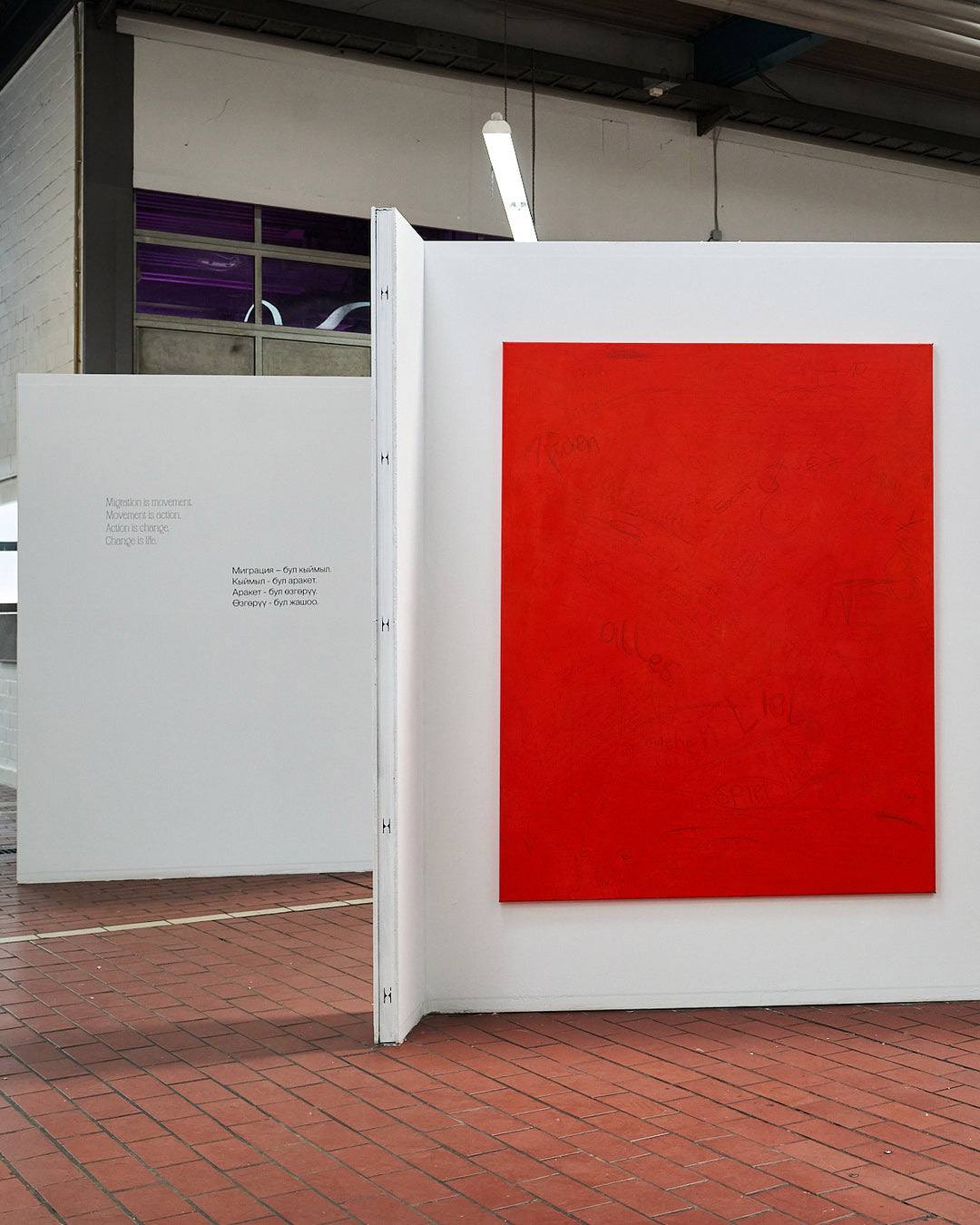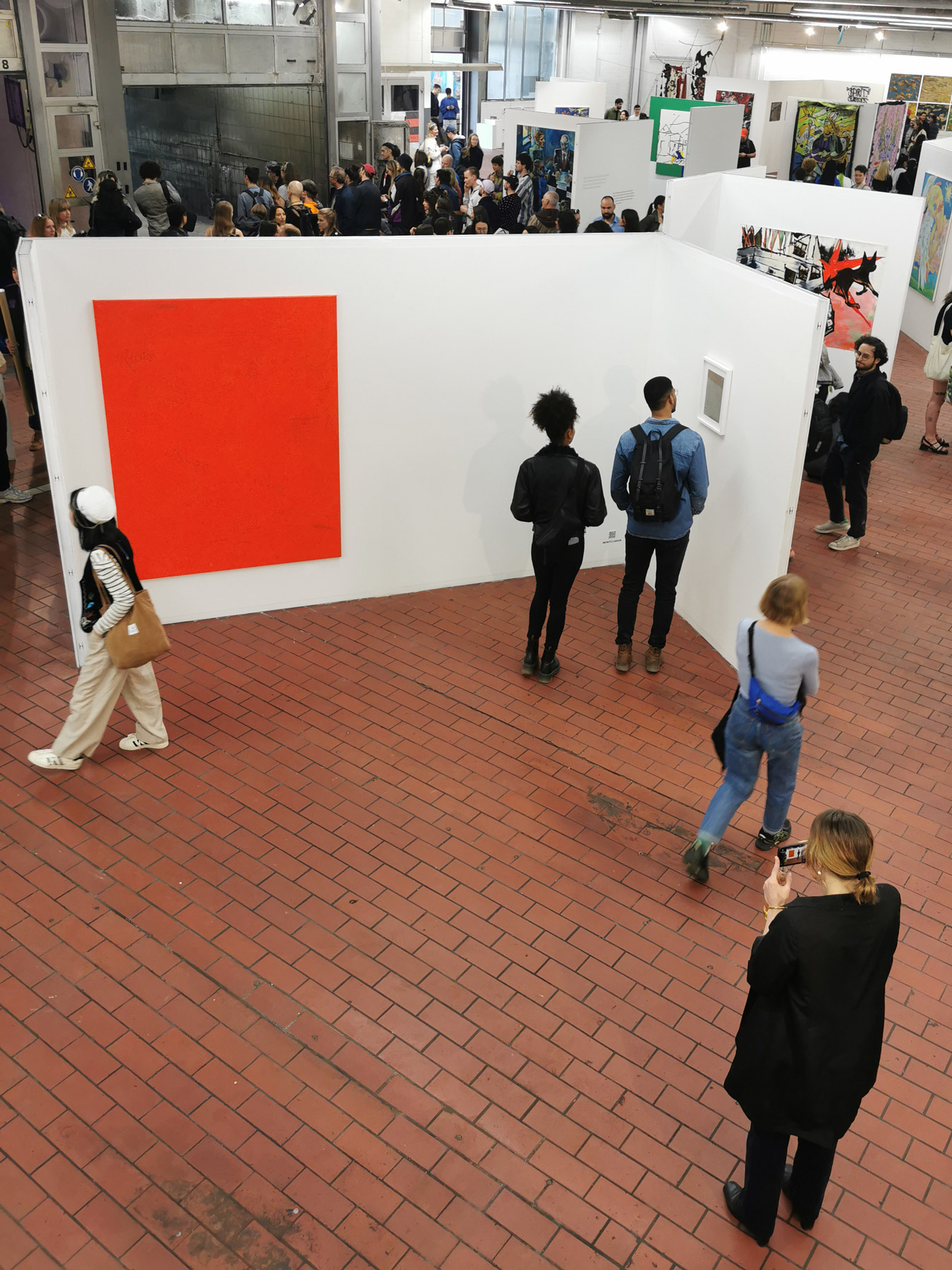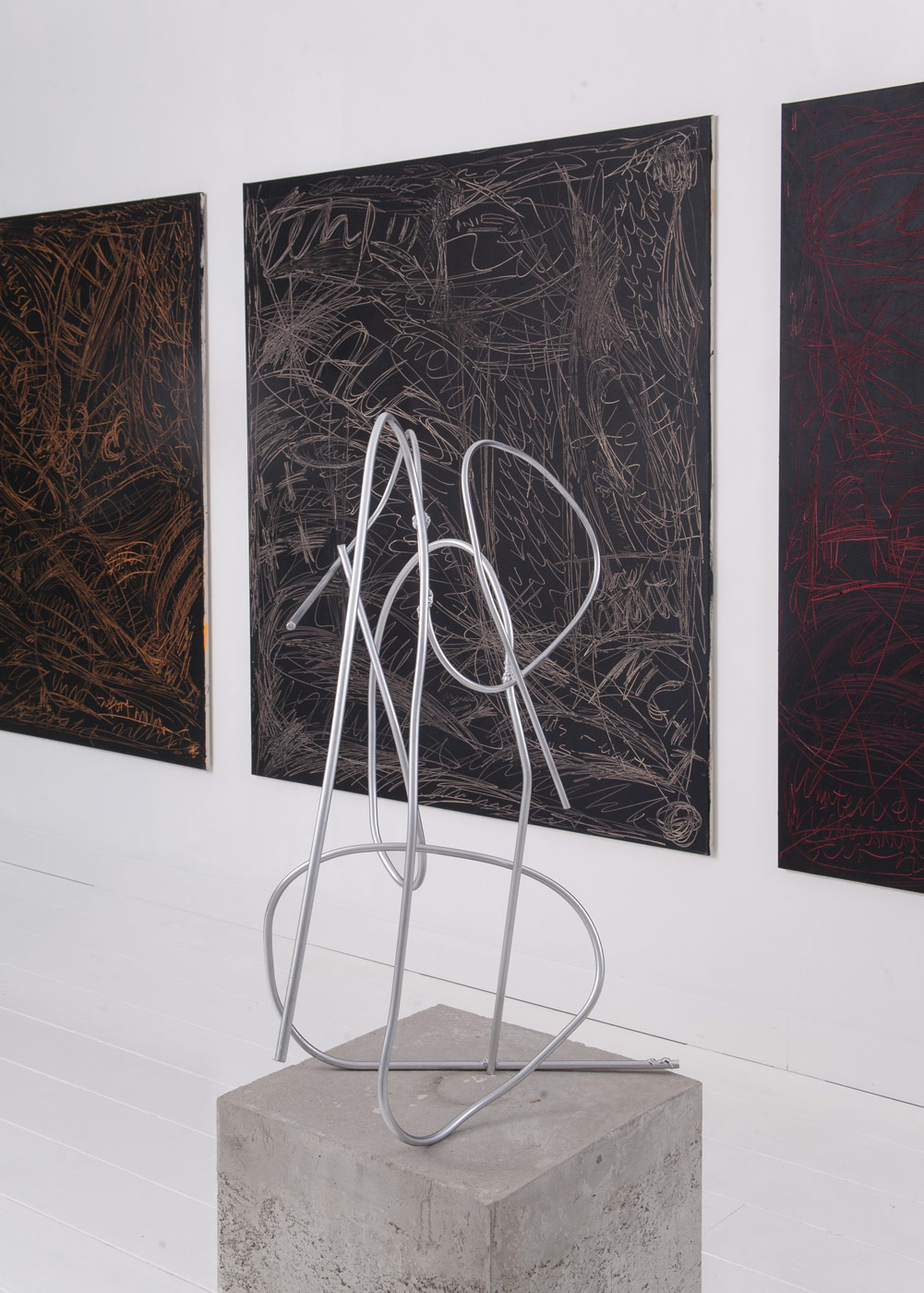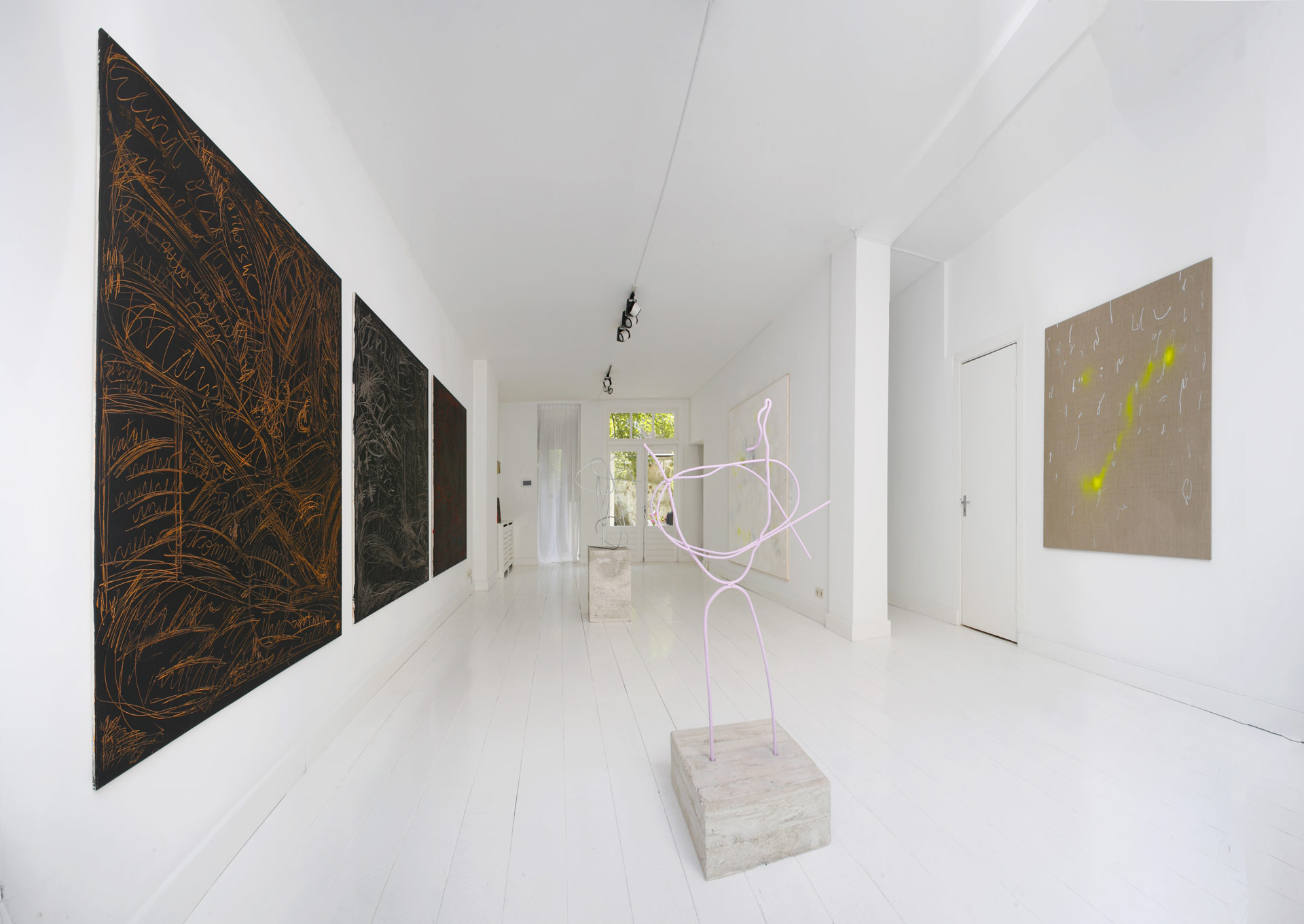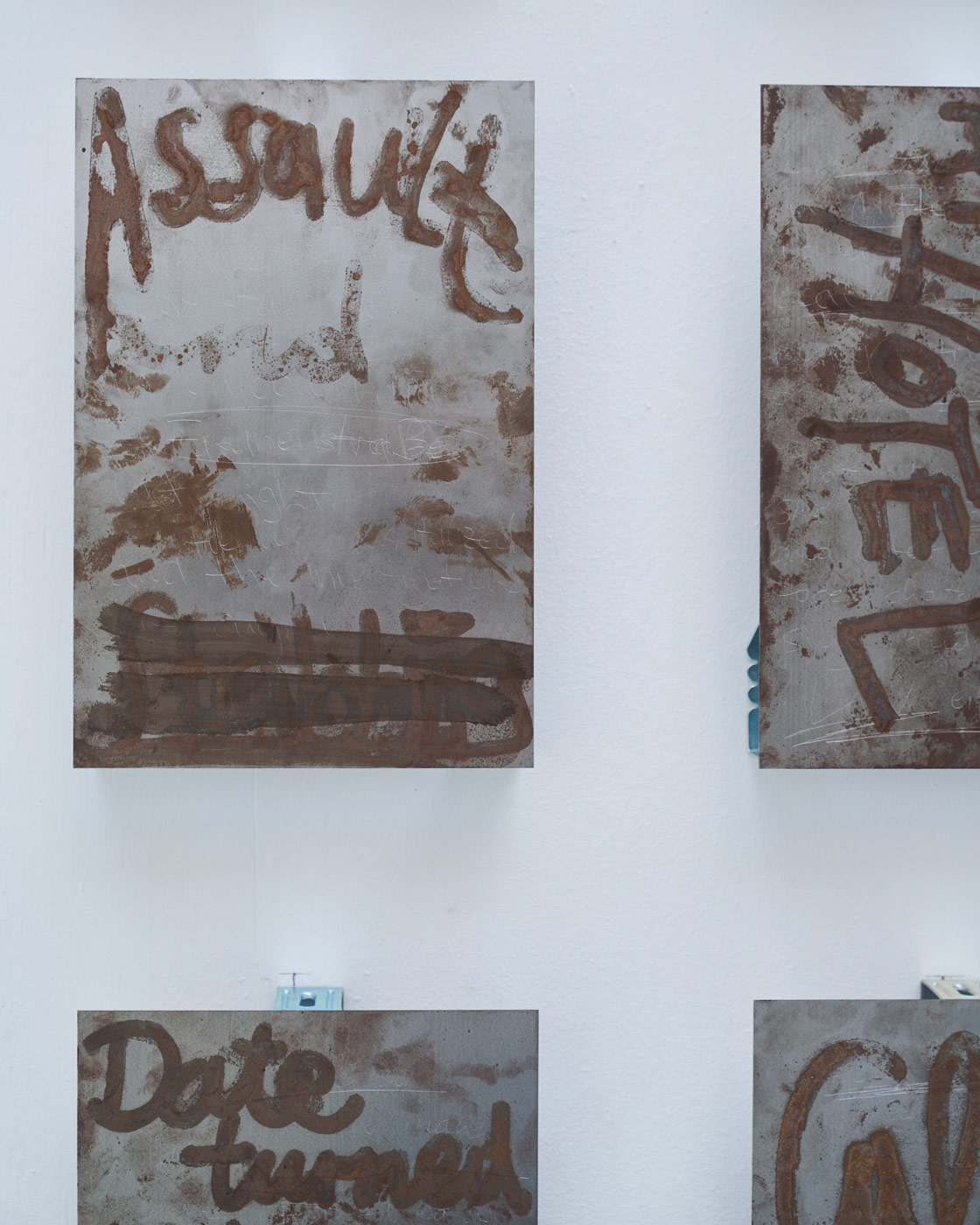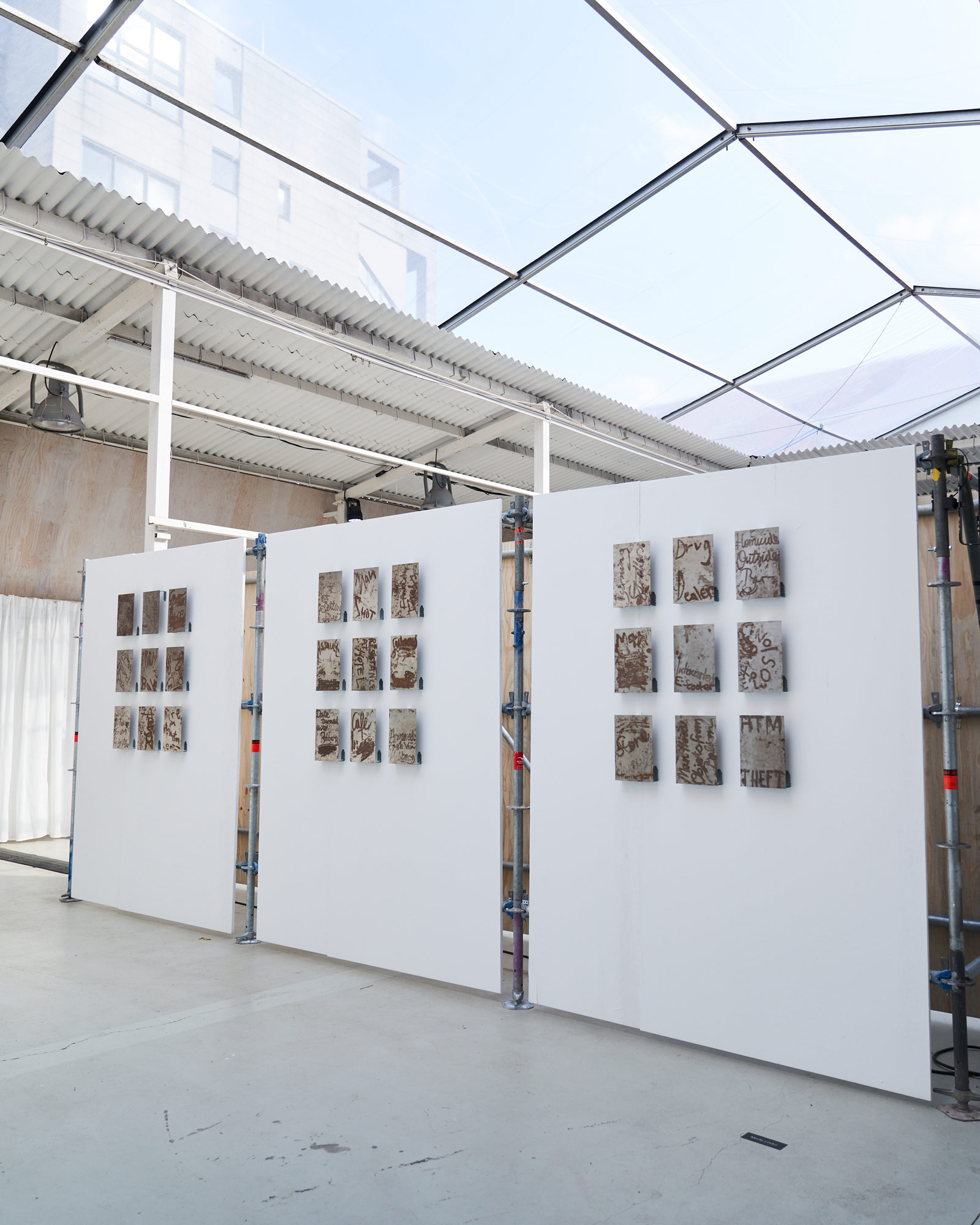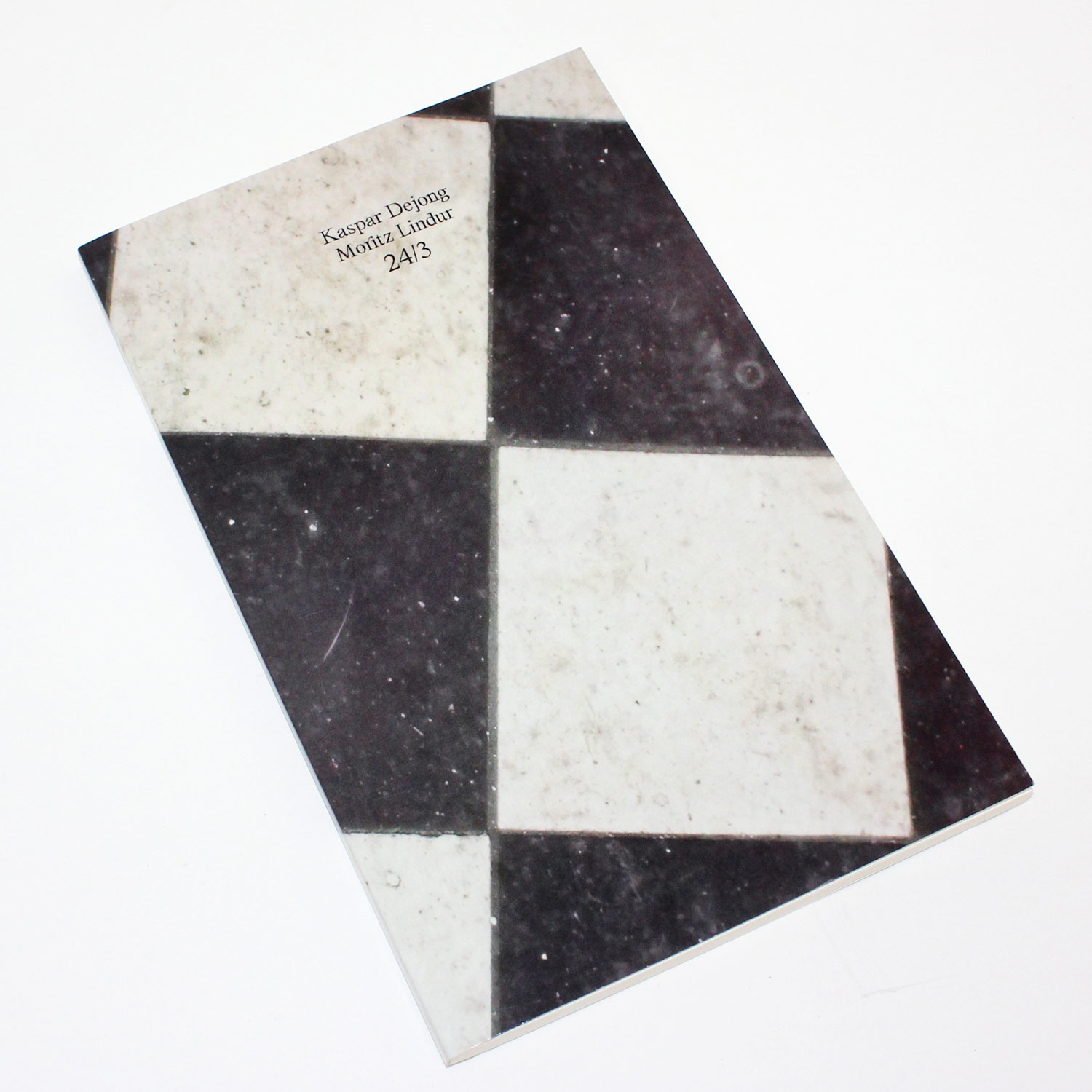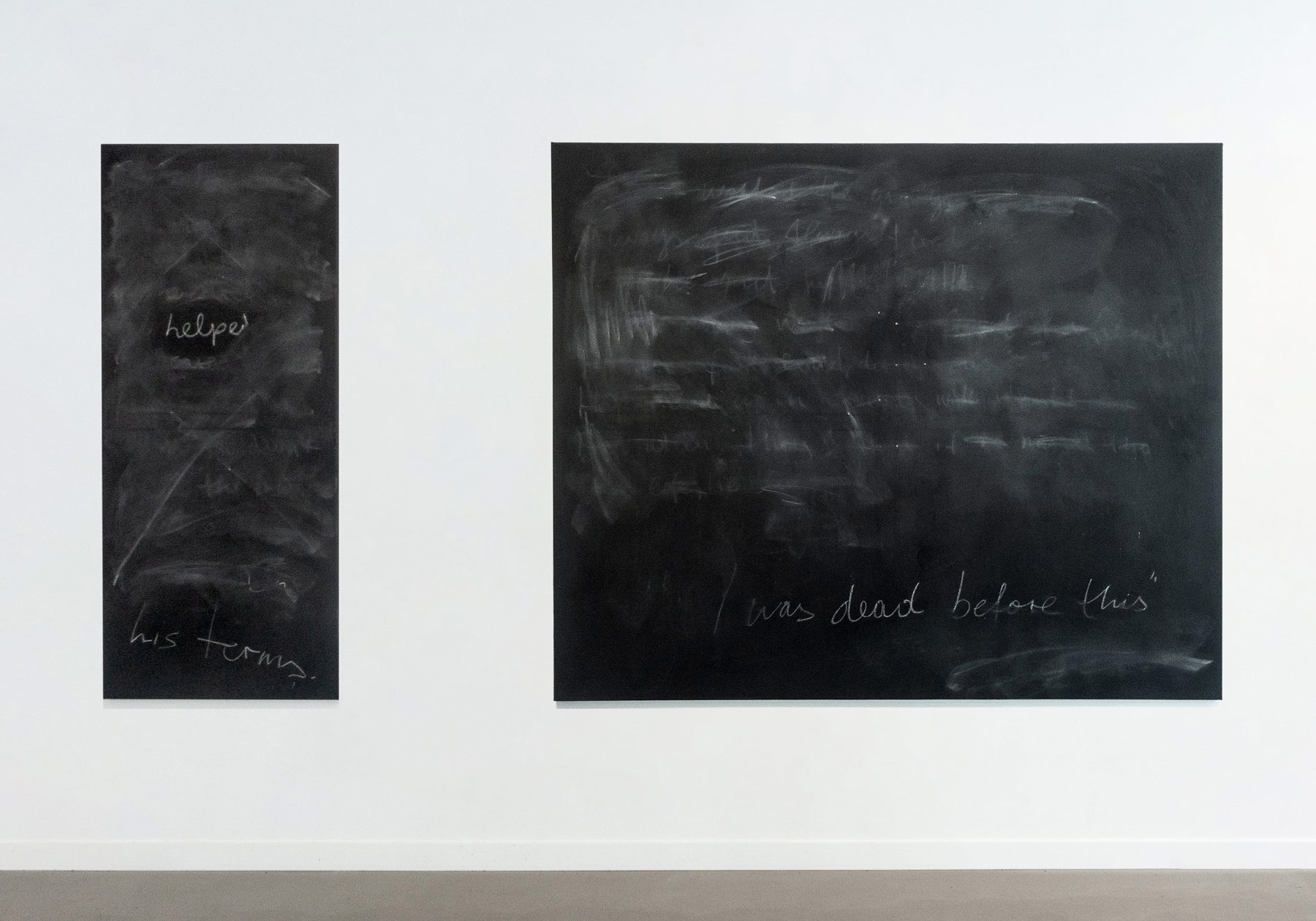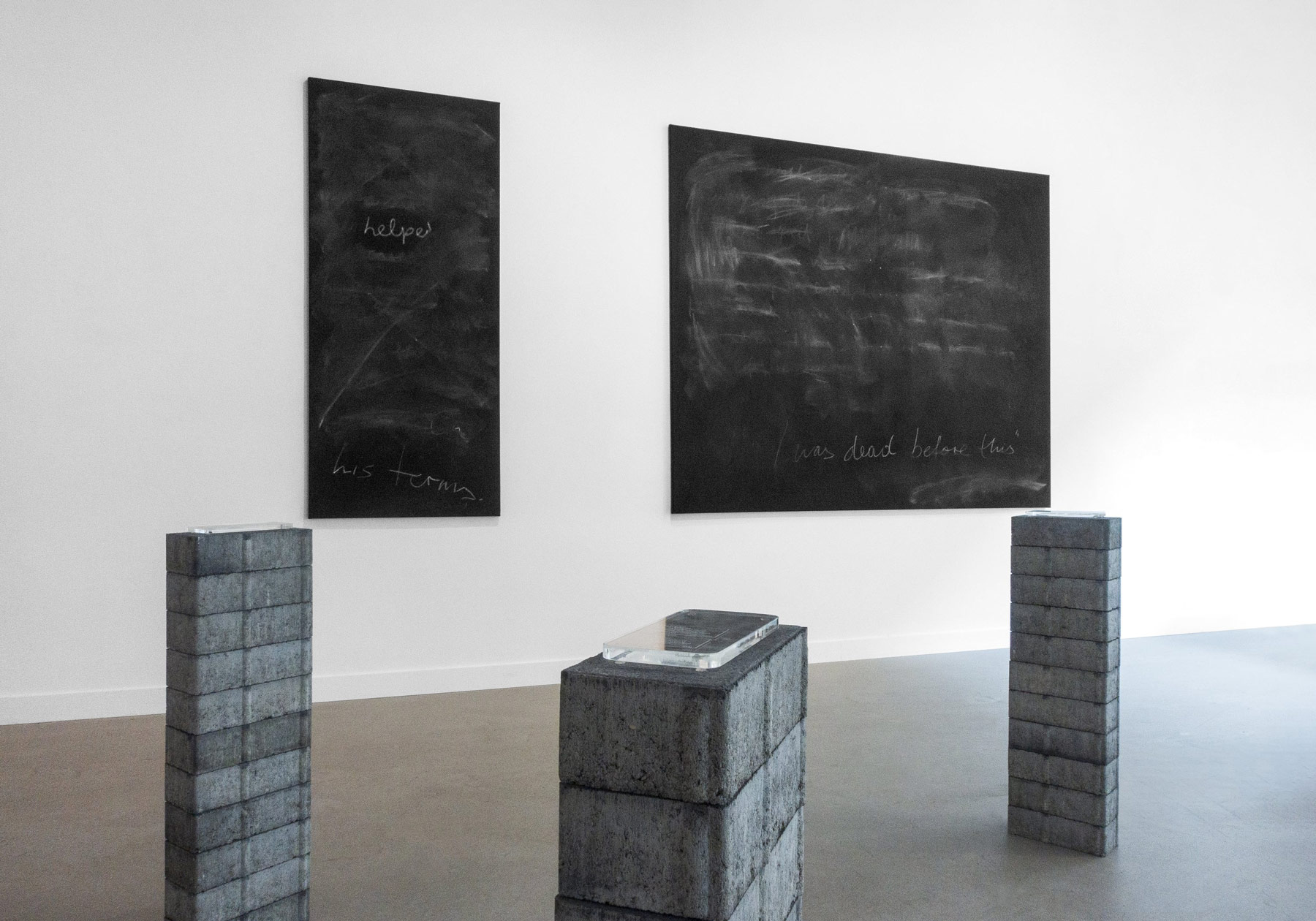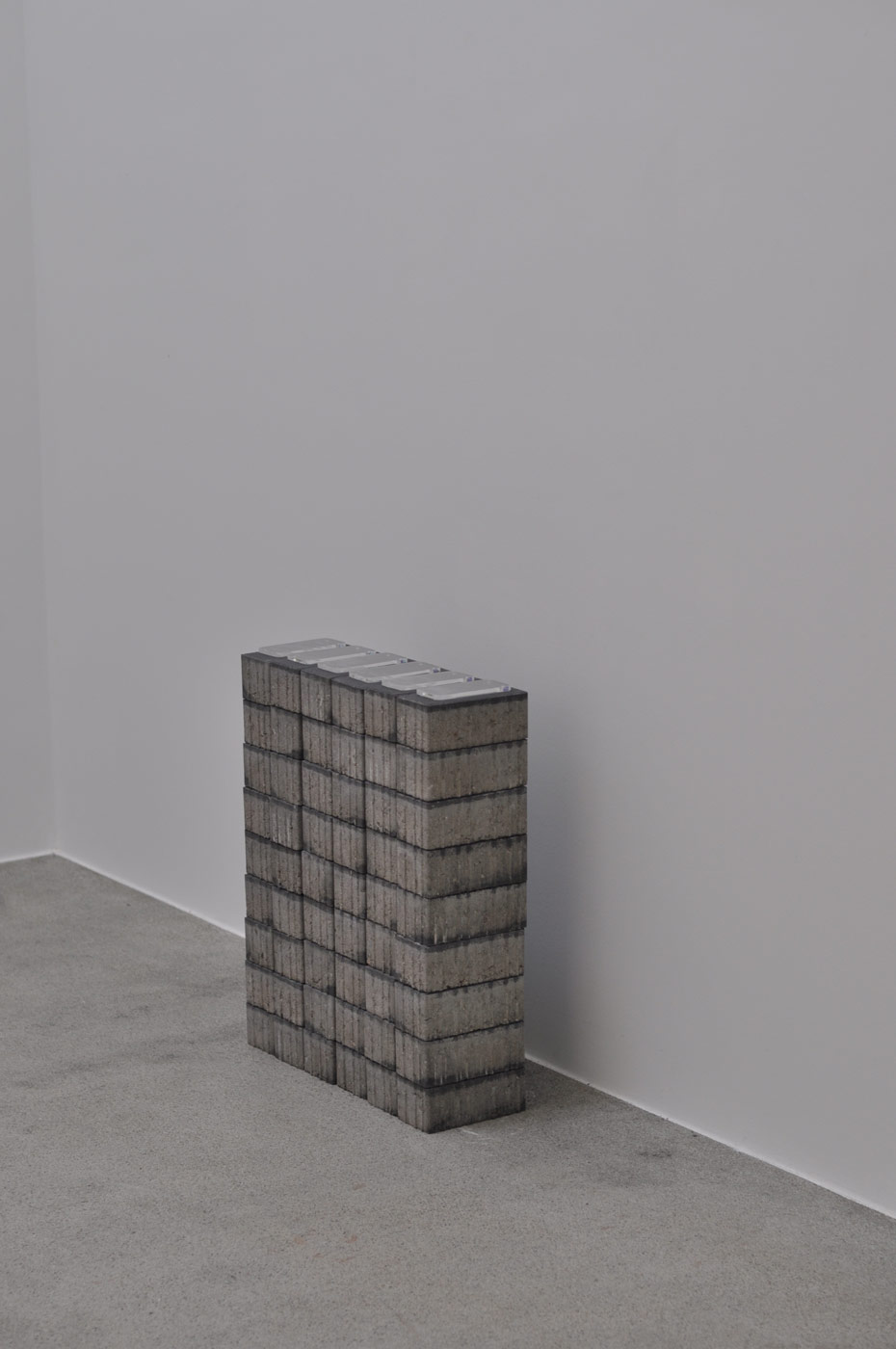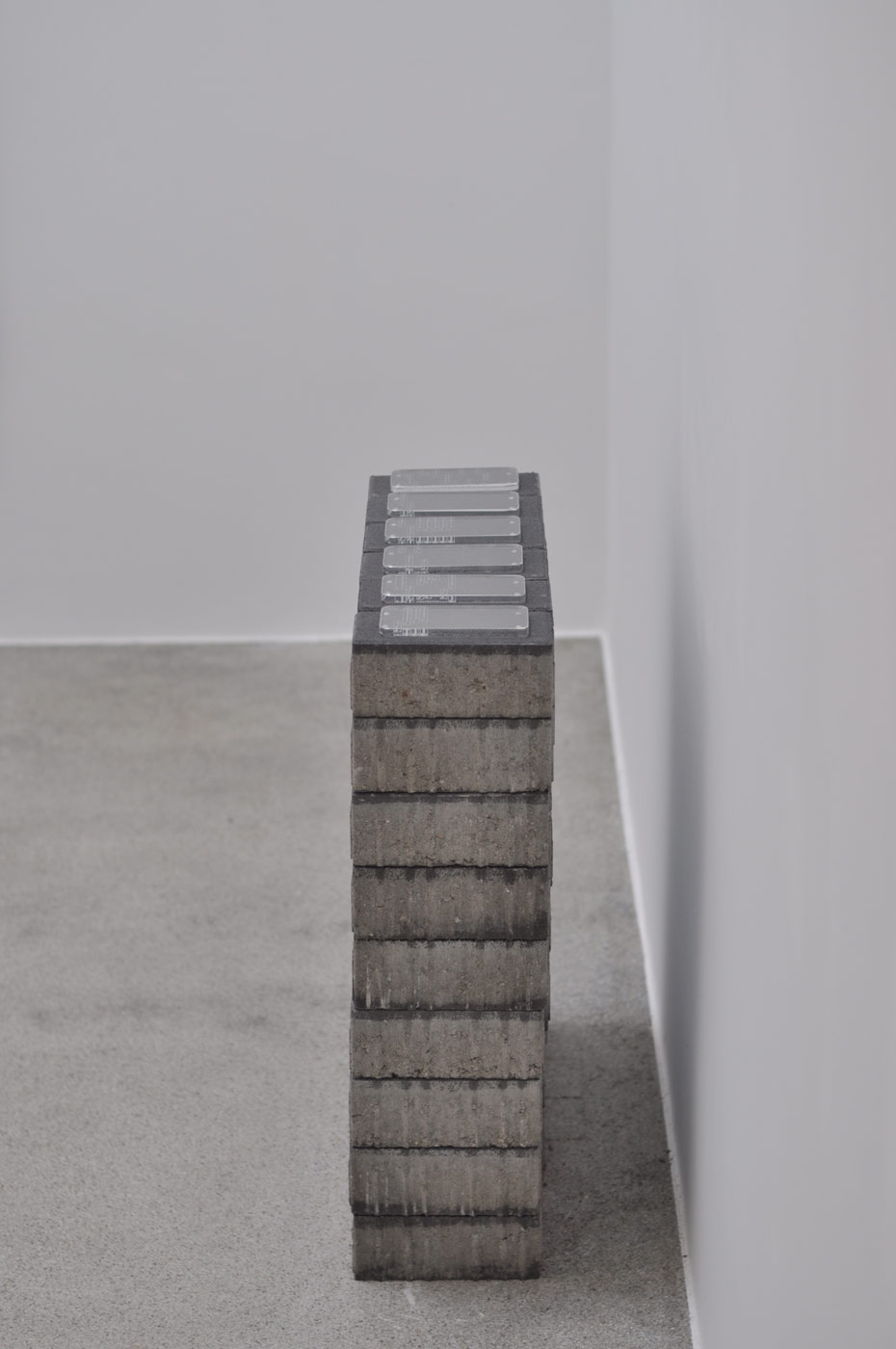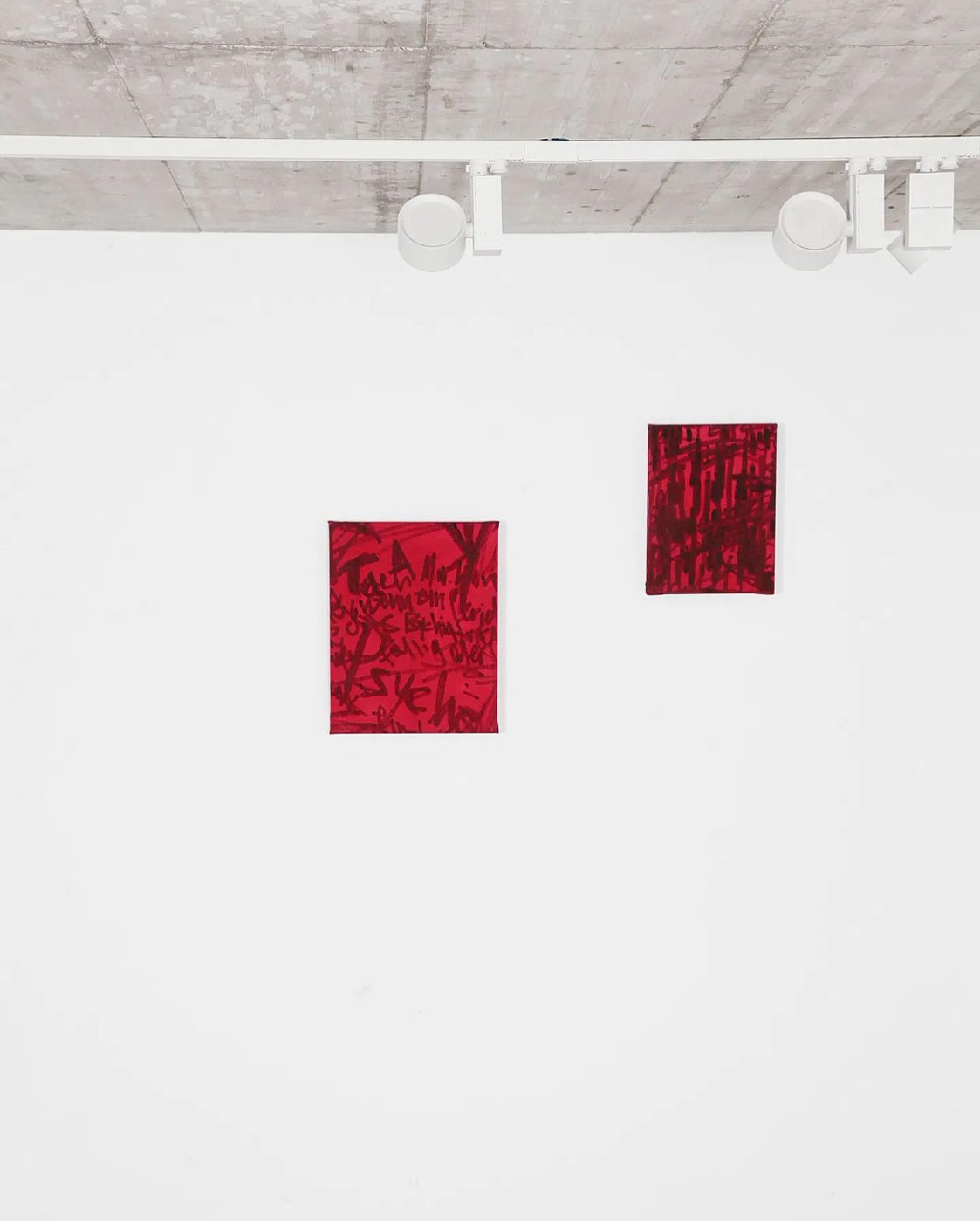COULD IT END TODAY
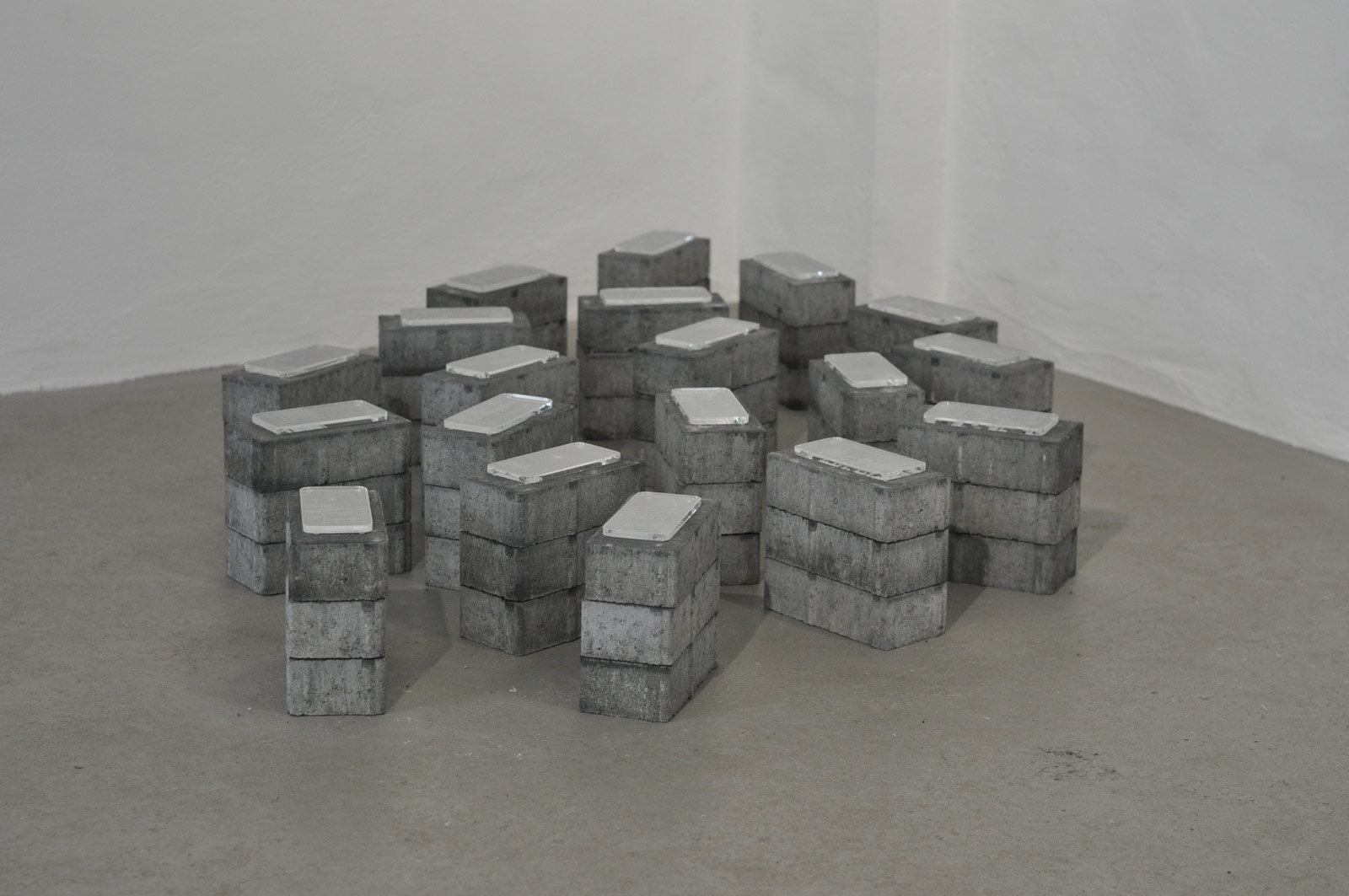
With his second solo exhibition, Moritz Lindur shows works that are almost physically transcending. They reflect scenes taking place on the edge of an affluent society, charged with everything that no one wishes for themselves or their loved ones. Scenes far beyond any red line.
Blood, drugs, crime, pain, guilt. These are words that usually leave all involved powerless. And there are no winners. ‘Victims’, ‘perpetrators’, these are words and at the same time dimensions, with which Lindur works without ever labelling or judging what is good and what is bad, let alone what is ‘evil’. As a result, it leaves the realities of all involved connected. In a fateful encounter. Forever. Whether they want to or not. This is what Lindur sees, feels, points out and demonstrates. And despite the wrangling for the visualisation and recognition of such, he continues to translate it equally aesthetic without ever pointing fingers.
For ‘could it end today’ this is shown through sculptures. Images serve as the quintessence of form taking observations. Without the chronology dictated by the events and a fully new order. Painting holds the strength of the conceptual whilst canvases vibrate in a different format.
In his work, Lindur is simultaneously an archivist and chronicler. Almost like an unvoluntary witness, who has experienced all the offenses and crimes that are documented by the police of what has occurred throughout the past decade, his ‘Berlin years’. Live, sometimes in real life, sometimes on the ‘ticker’.
His sculptures reflect social studies and can therefore exist without calling for commentary. Nevertheless, these works make it abundantly clear ‘how shit this is for everyone’. It’s not a game. At most, it’s a game of life and death. With real chances to lose one’s life. The ‘tomorrow I’ll stop’ or ‘I can quit whenever I want to’ echoes constantly and obtrusively. Daily self-deprecation on both sides of the deal. Never ending. Fuck!
Forever ingrained and marked with ‘incidents’, which are more like casualties and even more like crimes. It absorbs. There’s nothing ‘slick’ about it. It remains, even when the surfaces and memories of what has happened change. Even when the surface during the duration of the show oxidizes.
Smooth as glass are the surfaces of engraved phone screens, hiding and covering the harshness of the world of drug trafficking through their aesthetics. The texts may seem initially funny. But only at first glance: The texts are reproductions. 1:1.
Real people and real business between dealers and customers. Around the clock.
Often accompanied by a commanding notification sound: Bing, Bing, Bing. Nonstop. Pressured to digital addiction. Supposedly personal and friendly messages are accompanying transactions, showcasing drug trafficking every second. The rest is superficial: This world has to get by without real names and without traceable tracks. The language is crooked and needs to be deciphered. Hidden from every affluent society.
Moritz Lindur fades in with his show ‘could it end today’ and makes it visible.
15.02.25–14.03.25, accompanied by studio talks on 01.03.2025 and 15.03.2025
Exhibited at the Microkunsthalle Berlin.
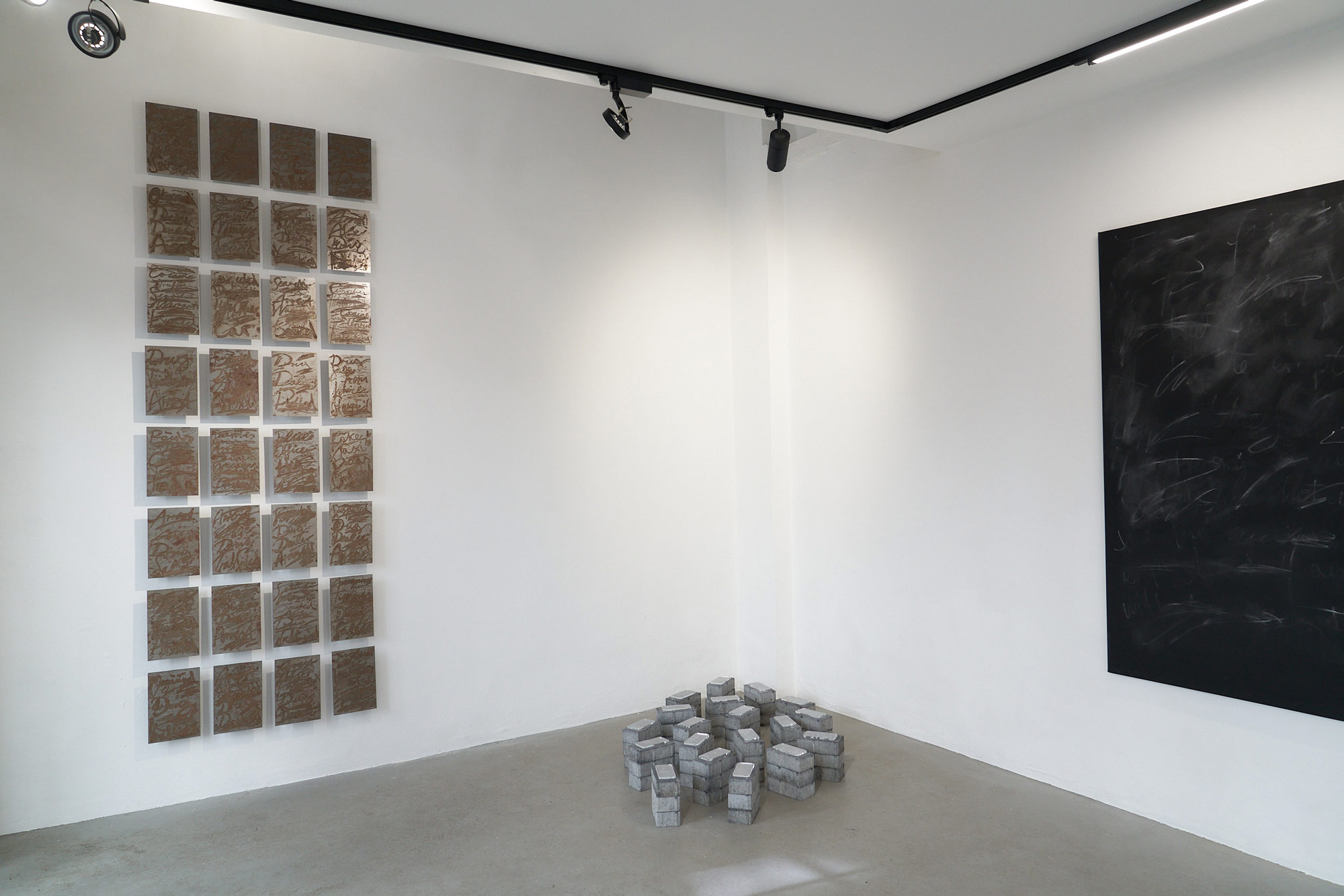

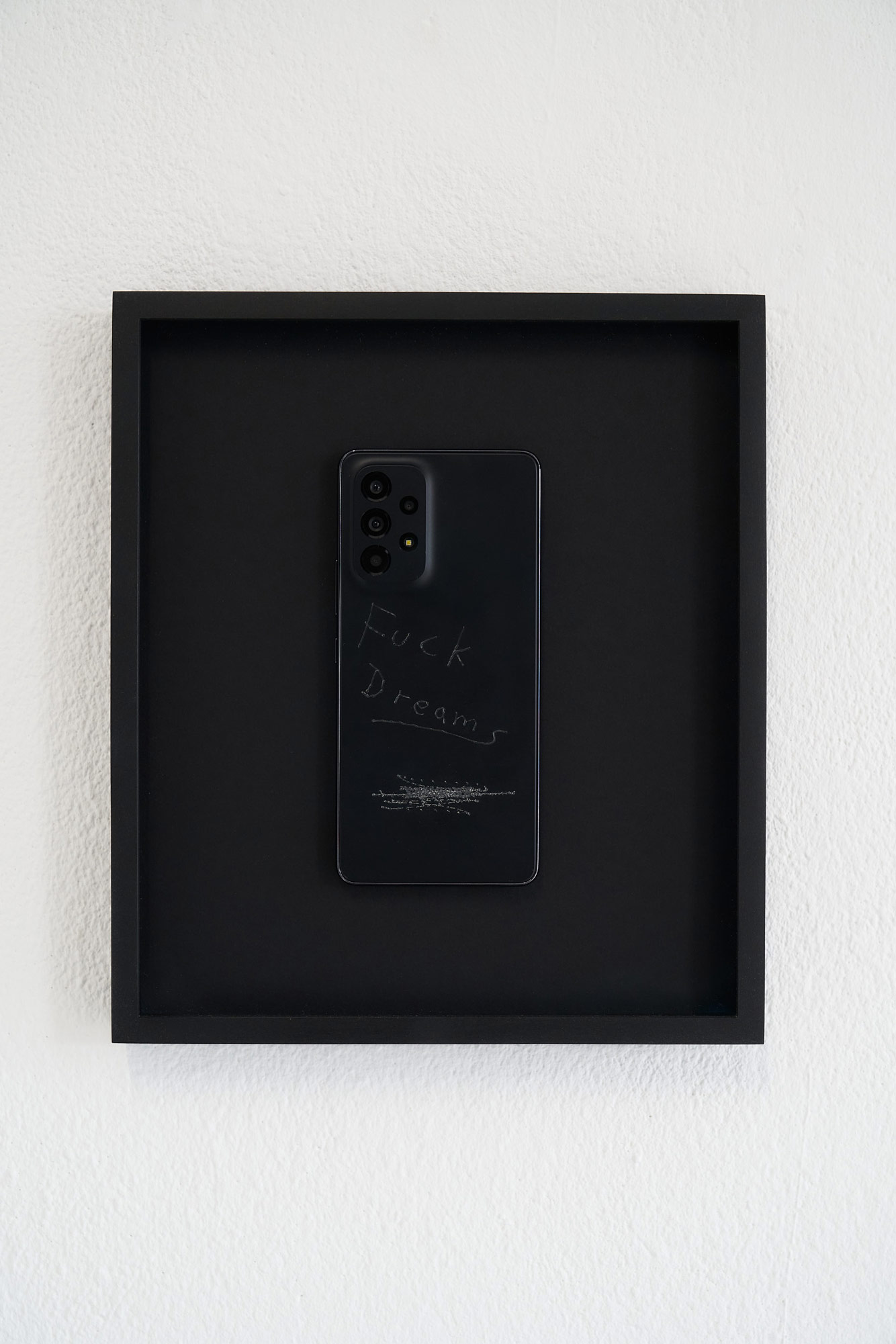


Mit seiner zweiten Einzelausstellung zeigt Moritz Lindur Werke, die fast körperlich berühren. Sie reflektieren Szenen, die sich am Rand einer Wohlstandsgesellschaft abspielen und beladen sind mit Allem, was sich niemand wirklich für sich oder seine Lieben wünscht. Szenen jenseits jeder roten Linie.
Blut, Drogen, Tat, Schmerzen, Schuld. Das sind Wörter, die ganz regelmäßig Ohnmacht für alle Beteiligten bedeuten. Und es gibt keine Gewinner. „Opfer“, „Täter“, das sind Worte und zugleich Dimensionen, mit denen Lindur arbeitet, ohne dabei zuzuordnen oder gar zu beurteilen, was eigentlich gut und was eigentlich schlecht, geschweige denn, was eigentlich „böse“ ist. Im Ergebnis sind die Realitäten aller Beteiligten verbunden. In einer schicksalshaften Begegnung. Für immer. Ob sie das wollen oder nicht. Das ist, was Lindur sieht, fühlt, aufzeigt und zeigt. Dabei bleibt er bei allem Ringen um das Sichtbarmachen stets auch simultanübersetzender Ästhet ohne Fingerzeig.
Für „could it end today“ werden Skulpturen gezeigt. Und Bilder, als Quintessenz der Gestalt werdenden Beobachtungen. Ohne die von den Geschehnissen vorgegebene Chronologie und mit neuer Ordnung. Die Malerei hält die Stärke des Konzeptuellen; die Leinwände schwingen aber in anderer Form.
In seinem Schaffen ist Lindur zunächst Archivar und Chronist. Gleich einem unfreiwilligen Zeugen, der all die polizeilich dokumentierten Vergehen und Verbrechen, die sich in seinen 10 „Berliner Jahren“ zugetragen haben, nahezu in Echtzeit erlebt hat. Live, mal im Leben, mal am „Ticker“.
Seine Skulpturen bilden gesellschaftliche Studien ab und können so ohne Kommentarfunktion auskommen. Dennoch wird mit diesen Werken mehr als deutlich, „wie verkackt das für alle ist“. Da ist nichts Spielerisches. Allenfalls ist das ein Spiel mit dem Leben. Mit realen Chancen, sein Leben zu verlieren. Das „morgen höre ich auf“ oder das „morgen kann ich aufhören“ hallt ständig und penetrant nach. Täglicher Selbstbeschiss beider Seiten des deals. Never ending. Fuck!
Für immer eingeritzt und gekennzeichnet mit „Begebenheiten“, die mehr Vorfälle und noch mehr Delikte sind. Es arbeitet. Da ist nichts mehr „slick“. Das bleibt, auch wenn sich die Oberflächen und Erinnerungen an das Geschehene verändern. Etwa, weil die Oberflächen während der Dauer der Show oxidieren.
Die spiegelglatten Oberflächen gravierter Handy-Bildschirme verheimlichen und verdecken in ihrer Ästhetik die Härte der Welt des Drogenhandels. Die Nachrichten mögen auf den ersten Blick witzig wirken. Allenfalls auf den ersten Blick: Die Texte sind Wiedergaben. 1:1. Reale Menschen und reale Geschäfte zwischen Dealern und Kunden. Rund um die Uhr. Oft begleitet von Nachrichtentönen, die befehlsgleich aufschlagen: Bing, Bing, Bing. Ohne Ende. Suchtdruck im Digitalen. Vermeintlich persönliche und freundliche Nachrichten sind Begleittexte zu Geschäften, die den im Sekundentakt stattfindenden Drogenhandel sichtbar machen. Der Rest ist Oberfläche: Diese Welt muss ohne Klarnamen und ohne verfolgbare Spuren auskommen. Die Sprache ist verschoben, muss dechiffriert werden. Ausgeblendet von jeder Wohlstandsgesellschaft.
Moritz Lindur blendet mit seiner Show „could it end today“ ein und macht sichtbar.
Text: Thomas Keller & LAV
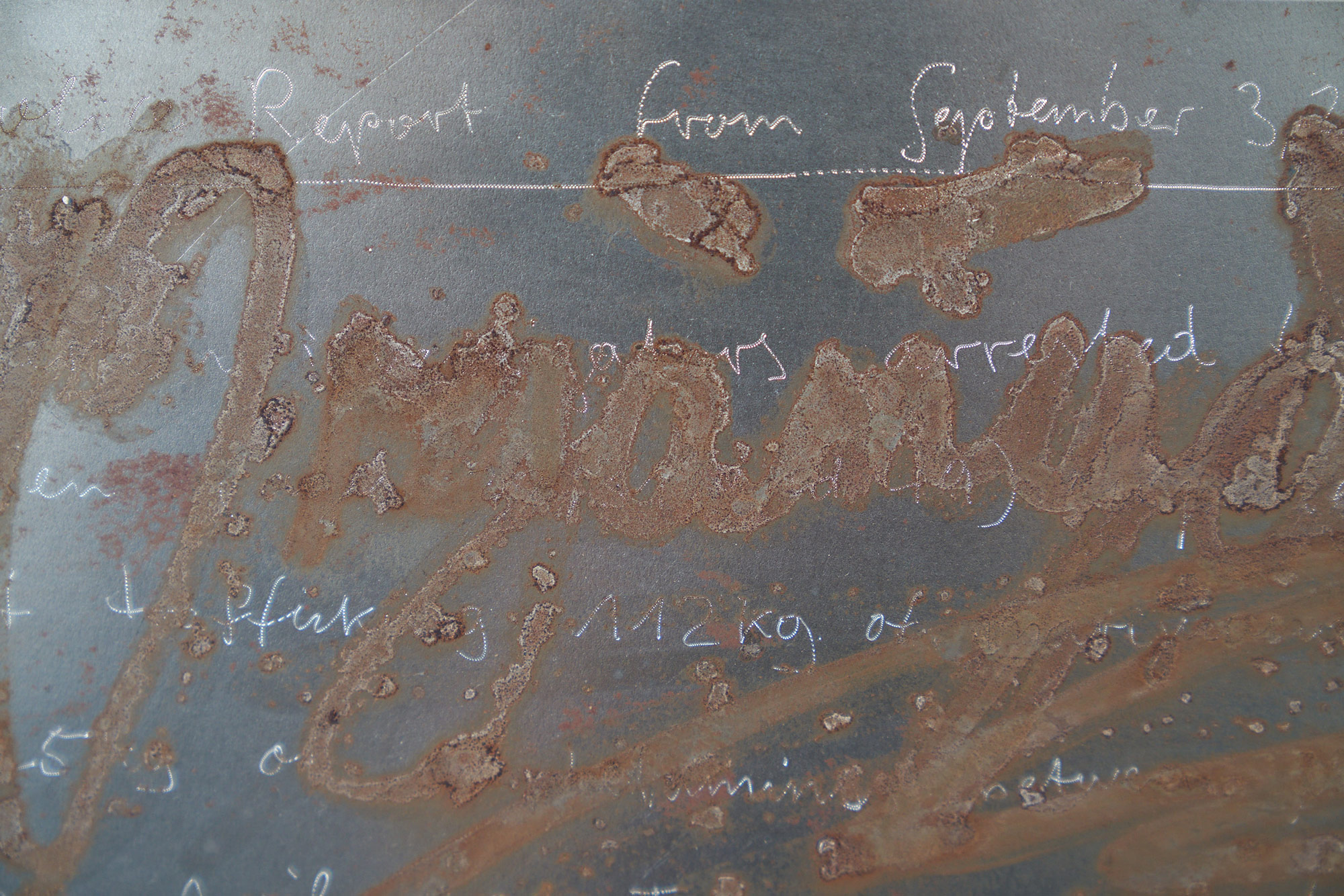
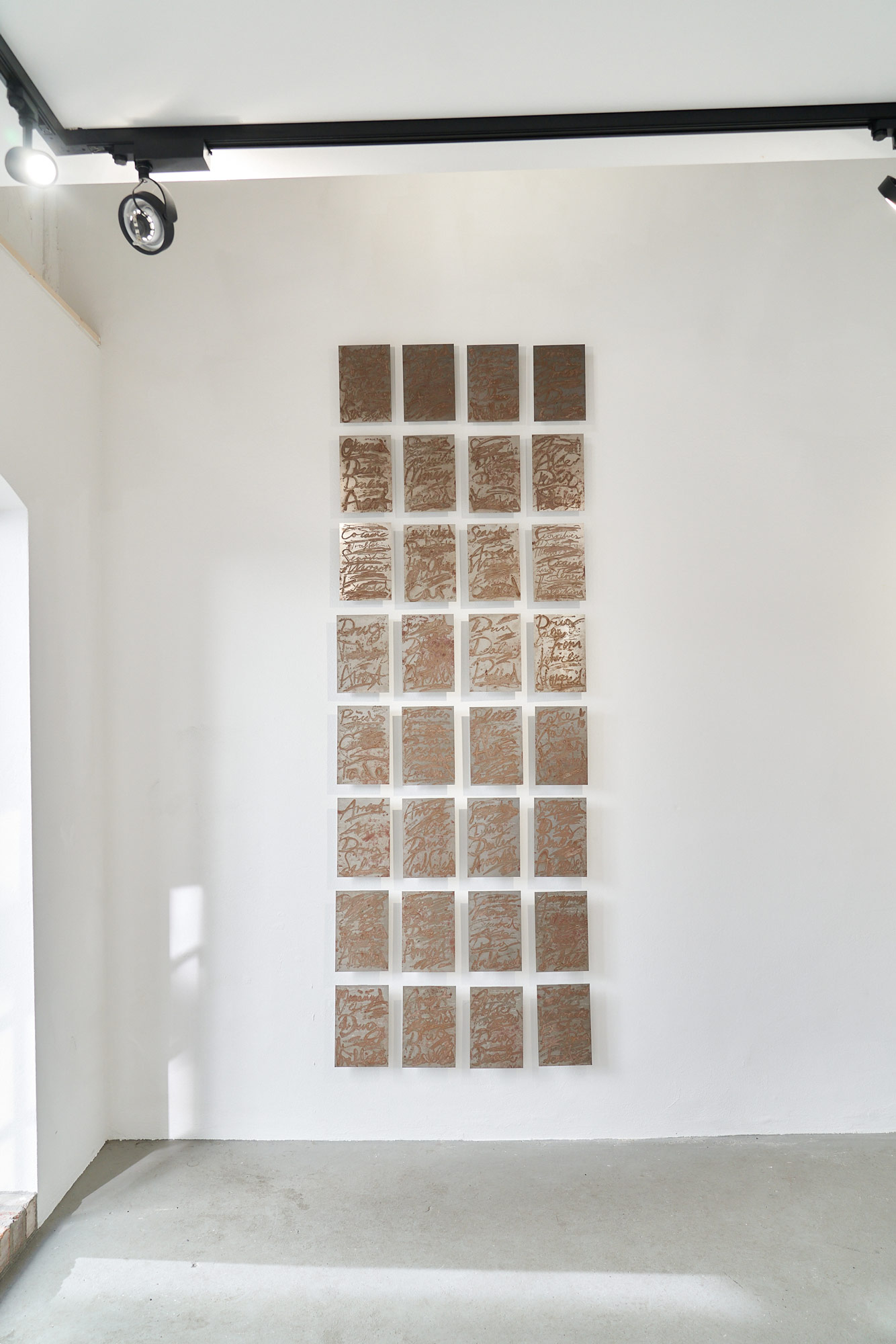
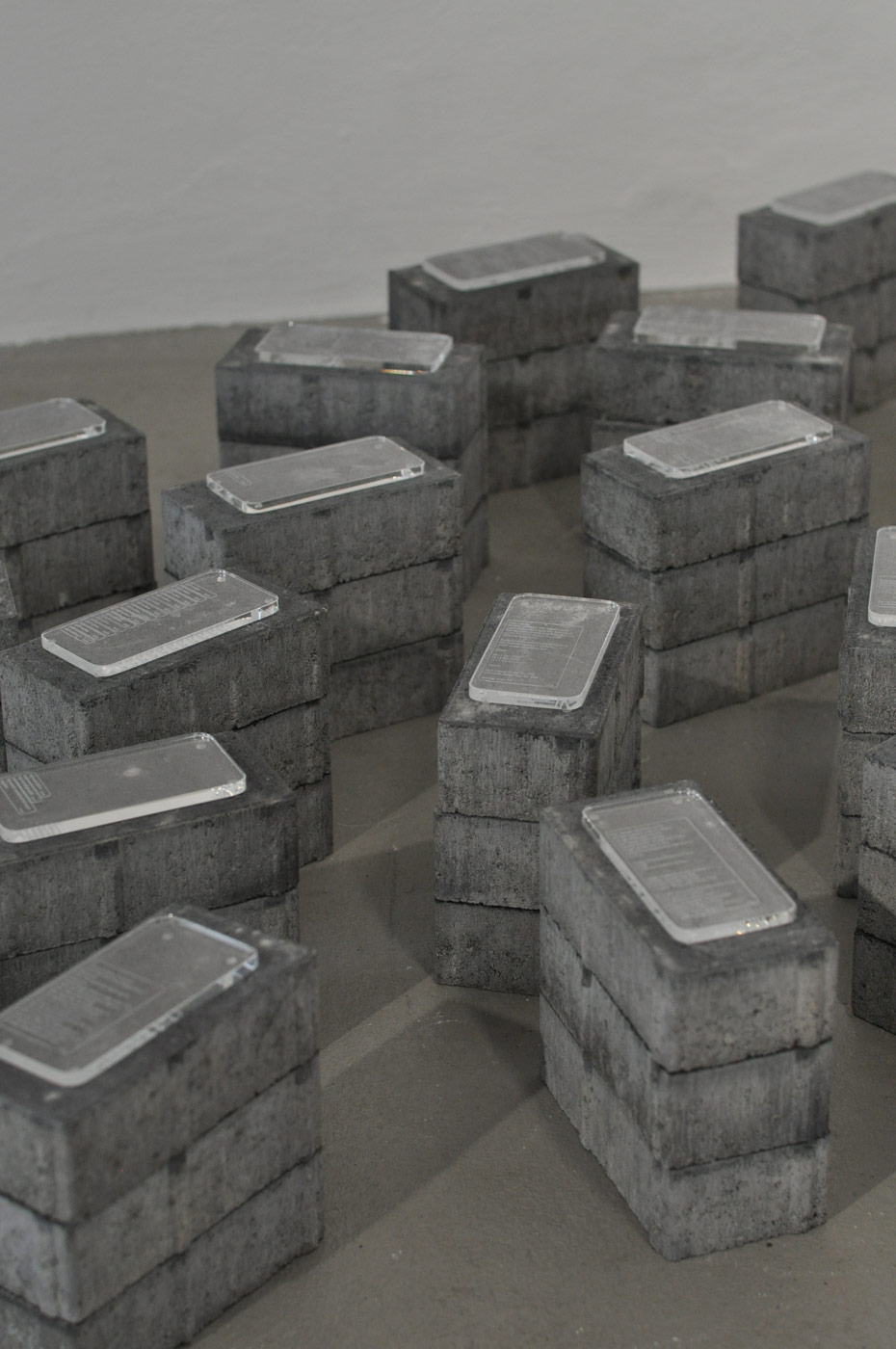
COULD IT END TODAY

With his second solo exhibition, Moritz Lindur shows works that are almost physically transcending. They reflect scenes taking place on the edge of an affluent society, charged with everything that no one wishes for themselves or their loved ones. Scenes far beyond any red line.
Blood, drugs, crime, pain, guilt. These are words that usually leave all involved powerless. And there are no winners. ‘Victims’, ‘perpetrators’, these are words and at the same time dimensions, with which Lindur works without ever labelling or judging what is good and what is bad, let alone what is ‘evil’. As a result, it leaves the realities of all involved connected. In a fateful encounter. Forever. Whether they want to or not. This is what Lindur sees, feels, points out and demonstrates. And despite the wrangling for the visualisation and recognition of such, he continues to translate it equally aesthetic without ever pointing fingers.
For ‘could it end today’ this is shown through sculptures. Images serve as the quintessence of form taking observations. Without the chronology dictated by the events and a fully new order. Painting holds the strength of the conceptual whilst canvases vibrate in a different format.
In his work, Lindur is simultaneously an archivist and chronicler. Almost like an unvoluntary witness, who has experienced all the offenses and crimes that are documented by the police of what has occurred throughout the past decade, his ‘Berlin years’. Live, sometimes in real life, sometimes on the ‘ticker’.
His sculptures reflect social studies and can therefore exist without calling for commentary. Nevertheless, these works make it abundantly clear ‘how shit this is for everyone’. It’s not a game. At most, it’s a game of life and death. With real chances to lose one’s life. The ‘tomorrow I’ll stop’ or ‘I can quit whenever I want to’ echoes constantly and obtrusively. Daily self-deprecation on both sides of the deal. Never ending. Fuck!
Forever ingrained and marked with ‘incidents’, which are more like casualties and even more like crimes. It absorbs. There’s nothing ‘slick’ about it. It remains, even when the surfaces and memories of what has happened change. Even when the surface during the duration of the show oxidizes.
Smooth as glass are the surfaces of engraved phone screens, hiding and covering the harshness of the world of drug trafficking through their aesthetics. The texts may seem initially funny. But only at first glance: The texts are reproductions. 1:1.
Real people and real business between dealers and customers. Around the clock.
Often accompanied by a commanding notification sound: Bing, Bing, Bing. Nonstop. Pressured to digital addiction. Supposedly personal and friendly messages are accompanying transactions, showcasing drug trafficking every second. The rest is superficial: This world has to get by without real names and without traceable tracks. The language is crooked and needs to be deciphered. Hidden from every affluent society.
Moritz Lindur fades in with his show ‘could it end today’ and makes it visible.
15.02.25–14.03.25, accompanied by studio talks on 01.03.2025 and 15.03.2025
Exhibited at the Microkunsthalle Berlin.





Mit seiner zweiten Einzelausstellung zeigt Moritz Lindur Werke, die fast körperlich berühren. Sie reflektieren Szenen, die sich am Rand einer Wohlstandsgesellschaft abspielen und beladen sind mit Allem, was sich niemand wirklich für sich oder seine Lieben wünscht. Szenen jenseits jeder roten Linie.
Blut, Drogen, Tat, Schmerzen, Schuld. Das sind Wörter, die ganz regelmäßig Ohnmacht für alle Beteiligten bedeuten. Und es gibt keine Gewinner. „Opfer“, „Täter“, das sind Worte und zugleich Dimensionen, mit denen Lindur arbeitet, ohne dabei zuzuordnen oder gar zu beurteilen, was eigentlich gut und was eigentlich schlecht, geschweige denn, was eigentlich „böse“ ist. Im Ergebnis sind die Realitäten aller Beteiligten verbunden. In einer schicksalshaften Begegnung. Für immer. Ob sie das wollen oder nicht. Das ist, was Lindur sieht, fühlt, aufzeigt und zeigt. Dabei bleibt er bei allem Ringen um das Sichtbarmachen stets auch simultanübersetzender Ästhet ohne Fingerzeig.
Für „could it end today“ werden Skulpturen gezeigt. Und Bilder, als Quintessenz der Gestalt werdenden Beobachtungen. Ohne die von den Geschehnissen vorgegebene Chronologie und mit neuer Ordnung. Die Malerei hält die Stärke des Konzeptuellen; die Leinwände schwingen aber in anderer Form.
In seinem Schaffen ist Lindur zunächst Archivar und Chronist. Gleich einem unfreiwilligen Zeugen, der all die polizeilich dokumentierten Vergehen und Verbrechen, die sich in seinen 10 „Berliner Jahren“ zugetragen haben, nahezu in Echtzeit erlebt hat. Live, mal im Leben, mal am „Ticker“.
Seine Skulpturen bilden gesellschaftliche Studien ab und können so ohne Kommentarfunktion auskommen. Dennoch wird mit diesen Werken mehr als deutlich, „wie verkackt das für alle ist“. Da ist nichts Spielerisches. Allenfalls ist das ein Spiel mit dem Leben. Mit realen Chancen, sein Leben zu verlieren. Das „morgen höre ich auf“ oder das „morgen kann ich aufhören“ hallt ständig und penetrant nach. Täglicher Selbstbeschiss beider Seiten des deals. Never ending. Fuck!
Für immer eingeritzt und gekennzeichnet mit „Begebenheiten“, die mehr Vorfälle und noch mehr Delikte sind. Es arbeitet. Da ist nichts mehr „slick“. Das bleibt, auch wenn sich die Oberflächen und Erinnerungen an das Geschehene verändern. Etwa, weil die Oberflächen während der Dauer der Show oxidieren.
Die spiegelglatten Oberflächen gravierter Handy-Bildschirme verheimlichen und verdecken in ihrer Ästhetik die Härte der Welt des Drogenhandels. Die Nachrichten mögen auf den ersten Blick witzig wirken. Allenfalls auf den ersten Blick: Die Texte sind Wiedergaben. 1:1. Reale Menschen und reale Geschäfte zwischen Dealern und Kunden. Rund um die Uhr. Oft begleitet von Nachrichtentönen, die befehlsgleich aufschlagen: Bing, Bing, Bing. Ohne Ende. Suchtdruck im Digitalen. Vermeintlich persönliche und freundliche Nachrichten sind Begleittexte zu Geschäften, die den im Sekundentakt stattfindenden Drogenhandel sichtbar machen. Der Rest ist Oberfläche: Diese Welt muss ohne Klarnamen und ohne verfolgbare Spuren auskommen. Die Sprache ist verschoben, muss dechiffriert werden. Ausgeblendet von jeder Wohlstandsgesellschaft.
Moritz Lindur blendet mit seiner Show „could it end today“ ein und macht sichtbar.
Text: Thomas Keller & LAV



